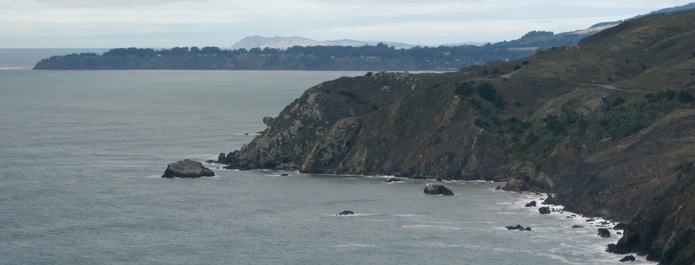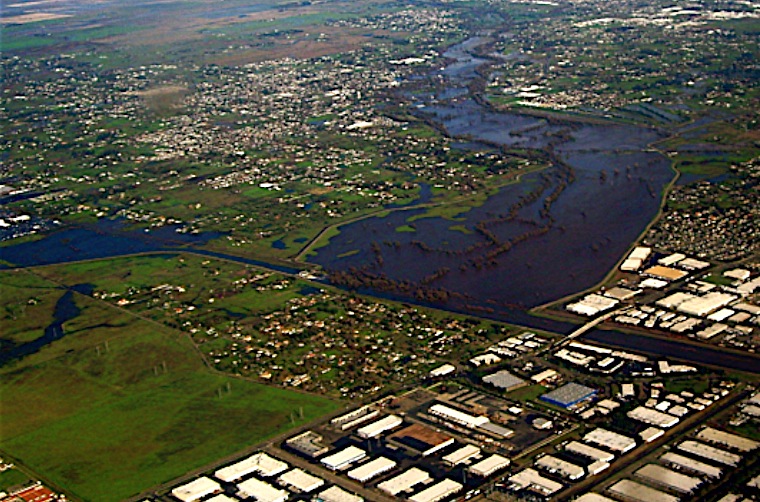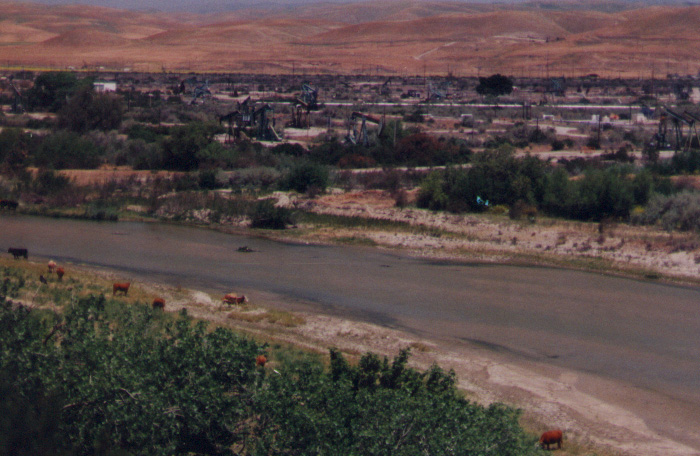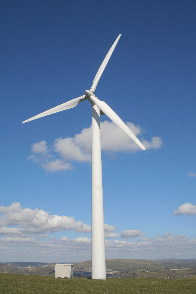
Report on energy pricing, 2009: solving problems.




—California no longer beckons as America’s promised land. Except, that is, in one area: creating a new energy economy.
But is its path one the rest of the nation can follow?
By RONALD BROWNSTEIN
"No one exemplifies that spirit of persistence more than Art Rosenfeld. He has been around long enough that as a graduate student he studied under Enrico Fermi. The wall of Rosenfeld’s office is covered with awards that stretch back decades. Yet, at 83, he has a new passion. Rosenfeld is crusading to replace dark roofs, which trap most of the sun’s heat, with white or “cool” roofs that are far more reflective, and thus save energy by keeping the building below cool. "
A state on the edge
Recent historical context
Energy Intensity improvements
The Road not taken
Renewable energy mandate
The approach was bipartisan
Conclusions
Most of the electricity in the United States comes from burning coal as this plant on the Ohio River does to create steam heat to drive turbines. Besides air pollution of the sulfur and carbon dioxide emissions, the plant requires tons of water to generate steam to drive turbines that generate electricity and to cool the condensed water afterwards.
A state on the edge
"The plan anticipates that the largest reductions will come from the major reforms the state has adopted in recent years, including the Pavley emissions law, the renewable portfolio requirement, and the cap-and-trade system itself. But it also envisions renewed efficiency efforts, improved regional planning to reduce sprawl, more installation of distributed solar power on rooftops, changes in forestry and water-distribution practices, and so on."
"Efficiency and decoupling have helped California to consume electricity far more thriftily than the rest of America. At the time of the 1973 oil shock, California used about 17 percent less electricity per person than the country at large. Since then, as Rosenfeld likes to point out in a chart that has been dubbed “the Rosenfeld Curve,” per capita electricity use in the nation has increased by about 50 percent to about 12,000 kilowatt-hours annually. Meanwhile, over that same period, per capita electricity use in California has remained absolutely flat at about 7,000 kilowatt-hours per year. That means the average Californian today uses about 40 percent less electricity per year than the average American."

Recent historical context

Energy Intensity improvements
Rosenfeld says the past generation’s gains indicate the state can improve its energy intensity (the amount of energy required to produce each dollar of GDP) by about 30 percent every decade. 'Efficiency,' he says with a twinkle, 'seems to be a renewable resource.' ”
"And there is the initial lesson from California’s energy experience: efficiency is the foundation of any effort to reduce reliance on fossil fuels. As California has learned, the most cost-effective way to replace coal or natural gas or petroleum isn’t to rely on solar or wind or biofuels; it’s to squeeze more work out of less energy."
"In 1973, Rosenfeld was working as a particle physicist at the Lawrence Berkeley National Laboratory. That September, the Democratic-controlled state legislature passed a bill creating a commission to manage California’s energy policy."
The Road not taken
In 1976, San Diego Gas & Electric Company asked the commission to approve a nuclear-power plant called Sun desert. Jerry Brown, the eclectic Democrat who succeeded Reagan as governor, didn’t want to authorize the plant, but he faced pressure to close the anticipated gap between electricity demand and supply.
Rosenfeld squared the circle for him, telling Brown that if the state imposed efficiency standards on refrigerators (which then consumed about 20 percent of a typical home’s power), it would save at least as much electricity as Sundesert could produce. The state went on to block the Sundesert plant, and in 1977 the commission approved aggressive efficiency standards not only for refrigerators and freezers but also for air conditioners.
Renewable energy mandate.

"July 2002.
Just weeks later, in September, Davis signed another landmark bill. This one required the state’s three investor-owned utilities to generate 20 percent of their electricity from renewable sources like solar and wind by 2017. This wasn’t the nation’s first so-called Renewable Portfolio Standard for utilities, but it was among the most ambitious. After Schwarzenegger arrived, the state raised the bar on the utilities’ renewable-power requirement twice more: the utilities must generate 20 percent of their power from renewable sources by 2010 and fully 33 percent by 2020.
"In 1978, using a pioneering computer program developed by Rosenfeld and his colleagues, the Energy Commission opened another front by approving more-sophisticated energy-efficiency standards for new buildings. Other states, and even other countries, followed.""Around the same time, an even more obscure California regulatory agency produced another landmark innovation. Utilities traditionally make more money when they sell more electricity, especially since the fixed investment of building power plants and transmission lines comprises such a large part of their costs. As a result, their natural inclination is to encourage their customers to use more. With the state trying to save energy through its efficiency standards, that incentive seemed increasingly perverse—especially after energy prices again soared after the second oil shock, in 1979. John Bryson, a founder of the Natural Resources Defense Council, whom Brown had appointed as chairman of the California Public Utilities Commission, began looking for ways to enlist the utilities in promoting efficiency."
The approach was bipartisan
Ambitious new initiatives have cascaded out of Schwarzenegger’s office—including the two measures raising the renewable-power requirement on utilities, a state subsidy program to encourage the installation of electricity-generating solar panels on 1 million California roofs, and in January 2007, an executive order establishing the nation’s first “low-carbon fuel standard,” which requires a reduction of at least 10 percent in the carbon emissions from transportation fuels by 2020.
“…'People make decisions in this building, a lot of times, based on what is their term,' he told me, gesturing with his cigar toward the offices around him. “So they make a decision, what can be done in the next four years … I always look 50 years ahead, because to me, I cannot think just about what can I accomplish while I am in office. The thing that is important is, what should the state look like 20, 30, 40 years from now.' The search for a new energy strategy also spoke to Schwarzenegger’s desire to define California (and undoubtedly himself) as the forward edge of innovation."
"another landmark initiative in 2006. After some occasionally tense maneuvering, the legislature passed and Schwarzenegger signed a Pavley-sponsored bill imposing the nation’s first mandatory statewide reductions in greenhouse-gas emissions. The bill required the state by 2020 to roll back its emissions to the 1990 level—a reduction of about 15 percent from the current level. (By separate executive order, Schwarzenegger also committed the state to an 80 percent reduction by 2050.) Environmentalists had been promoting exactly those goals as national policy without success under Bush. Once again, the stalemate in Washington emboldened Sacramento. California acted, Schwarzenegger told me, “because we saw no hope on the national level.” It was, he continued, “very important to let Washington know, ‘Look, you are not the one making all the decisions.’”Once California had passed its greenhouse-gas-emissions law, Schwarzenegger deputized Terry Tamminen, his key environmental adviser, to encourage other states to follow."
Conclusions
Peter Darbee, Pacific Gas and Electric, CEO, 2009.
"I think the biggest key to the success in California was putting in place the right incentives for California utilities,” Darbee noted. Echoing Cavanagh, Darbee said that decoupling made the utilities “neutral or indifferent” to sales; then decoupling-plus provided utilities “an incentive to sell less power rather than more.” With those economic signals nudging the utilities, he continued, “all of a sudden you’ve unleashed the power of these huge organizations to work with you rather than against you.” Darbee said that sometimes when he’s out sailing with customers, they will say to him, “‘Peter, you would love us, because we have all sorts of lights and air conditioning and we are using a lot of your power.’ And I look at them and say, ‘Well, actually I’d prefer that you use a lot less.’ "
"The California Experiment," By RONALD BROWNSTEIN, ATLANTIC MAGAZINE. ENERGY. OCTOBER 2009
Article author, Ronald Brownstein is the political director for Atlantic Media Company. 2009.

Joseph V. Siry, Preserving Biological Diversity Despite Losses Due to Abrupt Climate Change.
Best climate blog
Guide to Technical climate facts on the web
Authors
Archer | Christianson | Gelbspan | James Hansen, 04 : Hansen
06 | McKibben| Schmidt | Weart | Wigley
California water
State emissions
Opposing dams
Water conservation